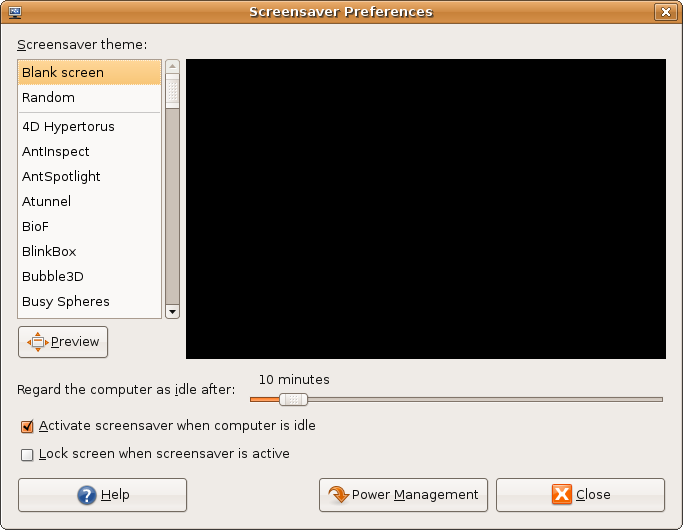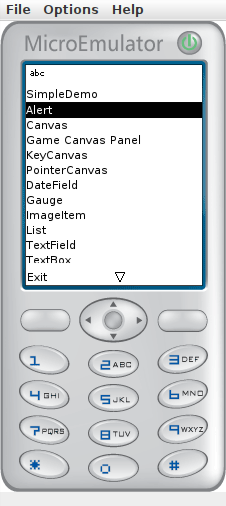|
Nokia 6133
The Nokia 6131/6133 is a clamshell cell phone introduced by Nokia on February 13, 2006. The Nokia 6131 has improvements over its predecessor, the Nokia 6101, as such, native USB connectivity (only CA-53 cable or compatible is supported), Bluetooth in addition to IrDA connectivity, SVGA vs. VGA camera. The Nokia 6131 NFC variant was Nokia's first telephone with NFC, but not the world's first. The Panasonic P506iC with integrated FeliCa NFC was launched on NTT Docomo in 2004, starting the mobile Osaifu-Keitai (Mobile Wallet) service. It was succeeded by the Nokia 6290 which was released in March 2007. Features Features include a 1.3-megapixel digital camera, support for up to a two-gigabyte microSD Card, 240x320 QVGA screen with 16.7 million colors and external 128x160 TFT screen with 262,144 colors. Software includes an XHTML compatible web browser, an email client and a media player (mp3, mp4 (audio only) & 3GP supported). There is also a small button located on the top right ... [...More Info...] [...Related Items...] OR: [Wikipedia] [Google] [Baidu] |
Nokia 6103
The Nokia 6103 is a mobile phone based on the Nokia Series 40 platform and the Nokia 6103 builds upon the popularity of the 6101. It features a Thin-film transistor, TFT display supports up to 65,536 colors (128 x 160 pixels).The phone also has a secondary external mini display that supports up to 4,096 colors (96 x 65 pixels). More key features include Bluetooth wireless technology, FM broadcasting, FM radio and camera. The 6103 has tri-band GSM coverage and operates on Global System for Mobile Communications, GSM 850/1800/1900 MHz or GSM 900/1800/1900 MHz depending on the region. The 6103's camera is a VGA camera (resolution 640 x 480 pixels) good enough for taking snapshots with, but in no way is it an alternative to even the cheapest digital cameras. The phone can be controlled via PC to send SMS messages, perform synchronization with Outlook, install Java apps, and more using the Nokia PC Suite. See also * List of Nokia products References {{Nokia phones Nokia m ... [...More Info...] [...Related Items...] OR: [Wikipedia] [Google] [Baidu] |
Screen Saver
A screensaver (or screen saver) is a computer program that blanks the display screen or fills it with moving images or patterns when the computer has been idle for a designated time. The original purpose of screensavers was to prevent phosphor burn-in on CRT or plasma computer monitors (hence the name). Though most modern monitors are not susceptible to this issue (with the notable exception of OLED technology, which has individual pixels vulnerable to burnout), screensaver programs are still used for other purposes. Screensavers are often set up to offer a basic layer of security by requiring a password to re-access the device. Some screensaver programs also use otherwise-idle computer resources to do useful work, such as processing for volunteer computing projects. As well as computers, modern television operating systems, media players, and other digital entertainment systems may include optional screensavers. Purpose Screen protection Before the advent of LCD scree ... [...More Info...] [...Related Items...] OR: [Wikipedia] [Google] [Baidu] |
Nokia Mobile Phones
Nokia Corporation is a Finnish multinational corporation, multinational telecommunications industry, telecommunications, technology company, information technology, and consumer electronics corporation, originally established as a pulp mill in 1865. Nokia's main headquarters are in Espoo, Finland, in the Helsinki metropolitan area, but the company's actual roots are in the Tampere region of Pirkanmaa.HS: Nokian juuret ovat Tammerkosken rannalla (in Finnish) In 2020, Nokia employed approximately 92,000 people across over 100 countries, did business in more than 130 countries, and reported annual revenues of around €23 billion. Nokia is a public limited company listed on the Nasdaq Helsinki and New York Stock Exchange. It was the world's 415th-largest company ... [...More Info...] [...Related Items...] OR: [Wikipedia] [Google] [Baidu] |
Multimedia Messaging Service
Multimedia Messaging Service (MMS) is a standard way to send messages that include multimedia content to and from a mobile phone over a cellular network. Users and providers may refer to such a message as a PXT, a picture message, or a multimedia message. The MMS standard extends the core SMS (Short Message Service) capability, allowing the exchange of text messages greater than 160 characters in length. Unlike text-only SMS, MMS can deliver a variety of media, including up to forty seconds of video, one image, a slide show, slideshow of multiple images, or audio. Media companies have utilized MMS on a commercial basis as a method of delivering news and entertainment content, and retailers have deployed it as a tool for delivering scannable coupon codes, product images, videos, and other information. On (mainly) older devices, messages that start off with text, as SMS, are converted to and sent as an MMS when an emoji is added. The commercial introduction of MMS started in March 2 ... [...More Info...] [...Related Items...] OR: [Wikipedia] [Google] [Baidu] |
Rogers Communications
Rogers Communications Inc. is a Canadian communications and media company operating primarily in the fields of wireless communications, cable television, telephony and Internet, with significant additional telecommunications and mass media assets. Rogers has its headquarters in Toronto, Ontario. The company traces its origins to 1914, when Edward S. Rogers Sr. founded Rogers Vacuum Tube Company to sell battery-less radios, although this present enterprise dates to 1960, when Ted Rogers and a partner acquired the CHFI-FM radio station; they then became part-owners of a group that established the CFTO television station. The chief competitor to Rogers is Bell Canada, which has a similarly extensive portfolio of radio and television media assets, as well as wireless, television distribution, and telephone services, particularly in Eastern and Central Canada. The two companies are often seen as having a duopoly on communications services in their regions, and both companies own ... [...More Info...] [...Related Items...] OR: [Wikipedia] [Google] [Baidu] |
T-Mobile US
T-Mobile US, Inc. is an American wireless network operator headquartered in Bellevue, Washington. Its majority shareholder and namesake is the German telecommunications company Deutsche Telekom. T-Mobile is the second largest wireless carrier in the United States, with 131 million subscribers as of March 31, 2025. The company was founded in 1994 by John W. Stanton of the Western Wireless Corporation as VoiceStream Wireless. Deutsche Telekom then gained plurality ownership in 2001 and renamed it after its global T-Mobile brand. , the German company holds a 51.4% stake in the company. T-Mobile US operates two main brands: T-Mobile and Metro by T-Mobile (acquired in a 2013 reverse takeover of MetroPCS that also led to T-Mobile's listing on the NASDAQ). In 2020, T-Mobile expanded through the acquisition of Sprint, which also made T-Mobile the operator of Assurance Wireless, a service subsidized by the federal Lifeline program. The company's growth continued in 2024 wit ... [...More Info...] [...Related Items...] OR: [Wikipedia] [Google] [Baidu] |
Java ME
Java Platform, Micro Edition or Java ME is a computing platform for development and deployment of porting, portable code for embedded system, embedded and mobile devices (micro-controllers, sensors, gateways, mobile phones, personal digital assistants, TV set-top boxes, printers). Java ME was formerly known as Java 2 Platform, Micro Edition or J2ME. The platform uses the object-oriented programming, object-oriented java (programming language), Java programming language, and is part of the Java (software platform), Java software-platform family. It was designed by Sun Microsystems (now Oracle Corporation) and replaced a similar technology, PersonalJava. In 2013, with more than 3 billion Java ME enabled mobile phones in the market, the platform was in continued decline as smartphones have overtaken feature phones. History The platform used to be popular in feature phones, such as Nokia's Series 40 models. It was also supported on the Bada (operating system), B ... [...More Info...] [...Related Items...] OR: [Wikipedia] [Google] [Baidu] |
Near Field Communication
Near-field communication (NFC) is a set of communication protocols that enables communication between two electronic devices over a distance of or less. NFC offers a low-speed connection through a simple setup that can be used for the bootstrapping of capable wireless connections. Like other proximity card technologies, NFC is based on inductive coupling between two electromagnetic coils present on a NFC-enabled device such as a smartphone. NFC communicating in one or both directions uses a frequency of 13.56 MHz in the globally available unlicensed radio frequency ISM band, compliant with the ISO/IEC 18000-3 air interface standard at data rates ranging from 106 to 848 kbit/s. The NFC Forum has helped define and promote the technology, setting standards for certifying device compliance. Secure communications are available by applying encryption algorithms as is done for credit cards and if they fit the criteria for being considered a personal area network. NFC ... [...More Info...] [...Related Items...] OR: [Wikipedia] [Google] [Baidu] |
Fido Solutions
Fido Solutions Inc. is a Canadian mobile network operator owned by Rogers Communications. Since its acquisition by Rogers in 2004, it has operated as a Mobile virtual network operator (MVNO) using the Rogers Wireless network. Fido pioneered the concept of providing unlimited service in select Canadian cities. Fido was the first carrier in Canada to launch a GSM-based network and the first wireless service provider in North America to offer General Packet Radio Service (GPRS) on its network. History Fiso Solutions was founded in 1996 by Microcell Telecommunications. Fido was the first provider in Canada to offer a network with the GSM standard. The original development of Fido was funded in part by Voicestream, now T-Mobile US. Logo Fido's logo is a yellow doghouse. The name, "Fido," was suggested to Microcell Telecommunications, the first importer of GSM technology from Europe to Canada, on the recommendation of its marketing-communications agency at the time, BOS (Beauche ... [...More Info...] [...Related Items...] OR: [Wikipedia] [Google] [Baidu] |
AT&T
AT&T Inc., an abbreviation for its predecessor's former name, the American Telephone and Telegraph Company, is an American multinational telecommunications holding company headquartered at Whitacre Tower in Downtown Dallas, Texas. It is the world's List of telecommunications companies, third largest telecommunications company by revenue and the List of mobile network operators in the United States, third largest wireless carrier in the United States behind T-Mobile US, T-Mobile and Verizon. As of 2023, AT&T was ranked 32nd on the Fortune 500, ''Fortune'' 500 rankings of the largest United States corporations, with revenues of $122.4 billion. The modern company to bear the AT&T name began its history as the American District Telegraph Company, formed in St. Louis in 1878. After expanding services to Arkansas, Kansas, Oklahoma and Texas through a series of mergers, it became the Southwestern Bell Telephone Company in 1920. Southwestern Bell was a subsidiary of AT&T Corporation, ... [...More Info...] [...Related Items...] OR: [Wikipedia] [Google] [Baidu] |






